Single image exposes the harsh reality of life in Australia that many try to ignore – and it only appears to be getting worse
On a bleak, gray Friday morning, most people are rushing to walk the city sidewalks. They might not even notice a man lying motionless on the cold, wet pavement unless they step around him.
The man was lying outside Sydney’s Wynyard station on York Street. But nearby, people in luxury hotel rooms were waking up to enjoy a steaming hot shower.
For Robert, a homeless man, life on the streets means he occasionally has to jump from the Pyrmont shore into Sydney’s freezing harbour to bathe.
It has become commonplace for people to live on the streets of cities in a country that once prided itself on being egalitarian and avoiding the extremes of coexisting wealth and poverty seen in less ‘fortunate’ areas.
Now commuters leaving Wynyard station see a glass wall covered in the belongings of people living on the street, as if it were an open-air vault.
Daily Mail Australia approached Robert where the man was sitting on a stone bench, his head under his hood, as people streamed past him, seemingly oblivious.
Robert, who had all his belongings in a shopping cart at the supermarket, said his sleeping bag had recently been stolen.
“Wherever I go, they take my shit and I have no money,” he said. “I have to wait all week or a couple months until I get some money (to get a new one).”
A man settles in the street near Wynyard station in central Sydney on a wet Friday morning
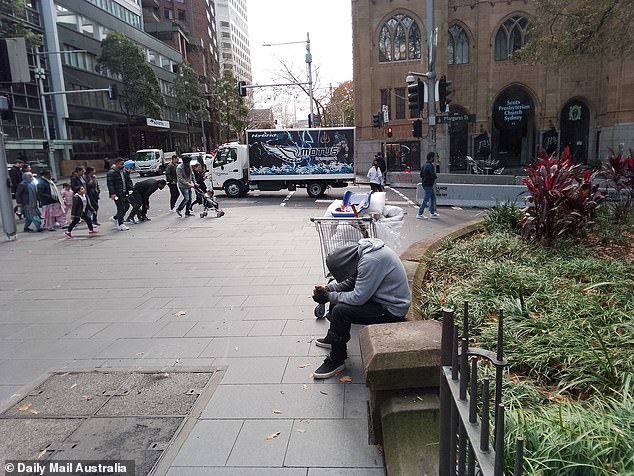
Later that day, Robert was found where the sleeping man was lying on a couch with his belongings in a shopping cart
“That’s nonsense.”
Robert receives what he thought was a disability benefit from Centrelink, but it ‘ran out’ within two weeks.
“I give my money to the first person who asks for it,” he said.
But it does give him the opportunity to spend a night indoors every now and then.
“Sometimes I stay in a motel and pay $80 or $90 and I have no money for a week,” he said.
Robert says he eats “anything he can get,” but sometimes that means just one meal a week.
“I like Burger King, Hungry Jack’s and McDonald’s meat patties,” he said.
Sometimes he goes to a charity in town to ask for help if he “has no money,” but usually he doesn’t ask for help.
“I’m not begging,” he declared firmly.
He said that ‘sometimes’ money is offered by passers-by.
“I was standing there and a gentleman came up to me and gave me a $50 bill. Twenty minutes later, someone gave me $20 when I had no money,” he said.
Robert said he ended up on the streets when he lost his job at a glassblowing shop.
“I was a specialist in the glass business,” he said. “A few years ago I was making $108 a week, but I cut my finger.
“I got 38 stitches and I didn’t get my insurance money.”
Robert said that when his life went into a downward spiral, everyone who knew him abandoned him.
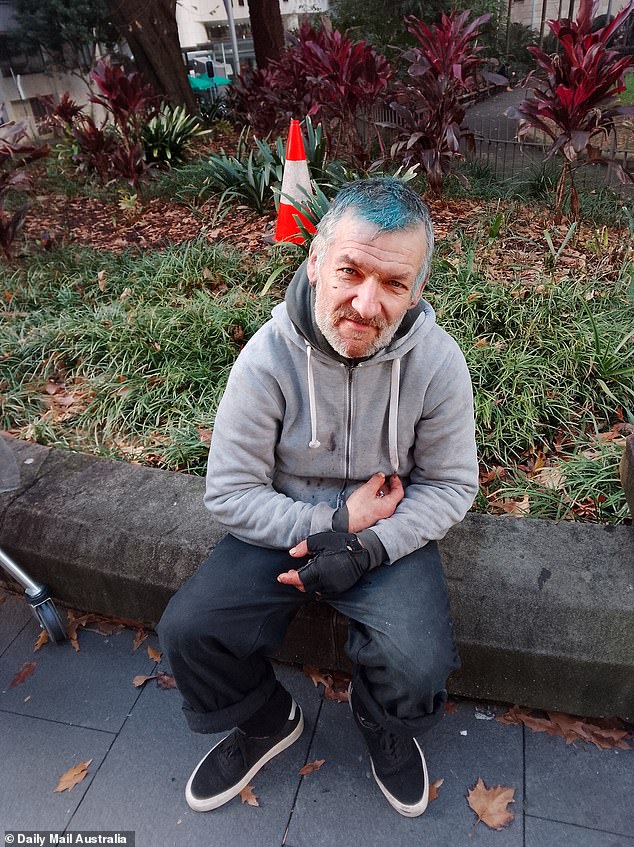
Robert said he had been living on the streets for eight years after losing his job at a glass blowing factory due to an injury
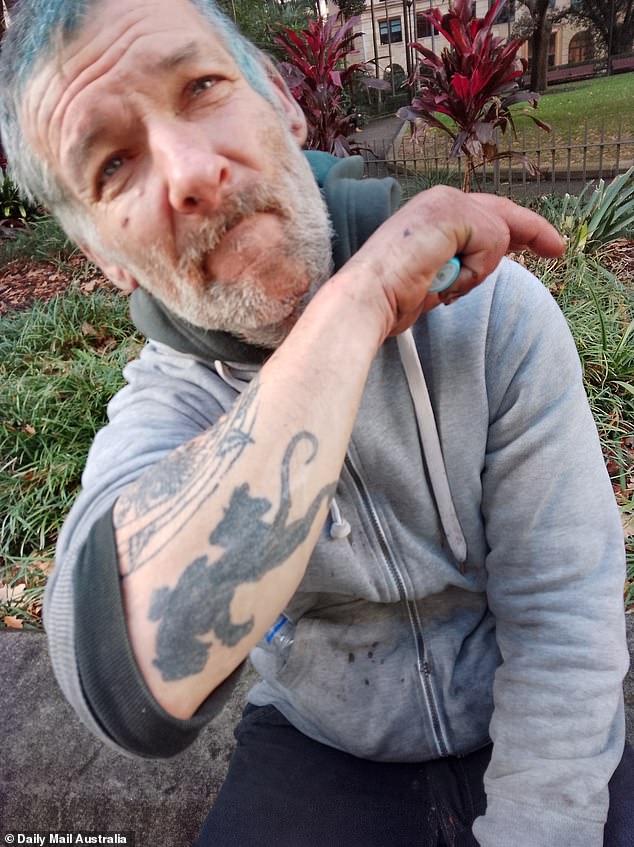
Robert said that some weeks he might only eat one meal, but he refused to beg
“I trusted a lot of people and they ended up stabbing me,” he said. “They can’t hurt me anyway, but for some reason they’re still trying to get me.”
Despite his precarious lifestyle, Robert said his health has “never been better” and credited this to the training he has received in martial arts and breakdancing.
“I’m very fit,” he said.
Robert said he didn’t talk to other people on the street.
“I want to be alone,” he said.
Sometimes he was harassed by the police, but he didn’t know exactly why.
In May it was reported that the annual New South Wales homeless count showed a 25 per cent increase in the number of homeless people across the state.
Officials found 2,037 people sleeping rough in February, compared to 1,623 a year earlier.
Some of the largest increases occurred in coastal areas, including an almost 80 percent increase in homelessness in the Coffs Harbour region.
Byron Shire, a popular tourist region in the state’s north, had the highest homelessness of any local government area in the state.
In this region and other ocean-side areas such as Sydney’s Northern Beaches, large camps have sprung up with homeless people sleeping in tents, amid a dire shortage of affordable accommodation.
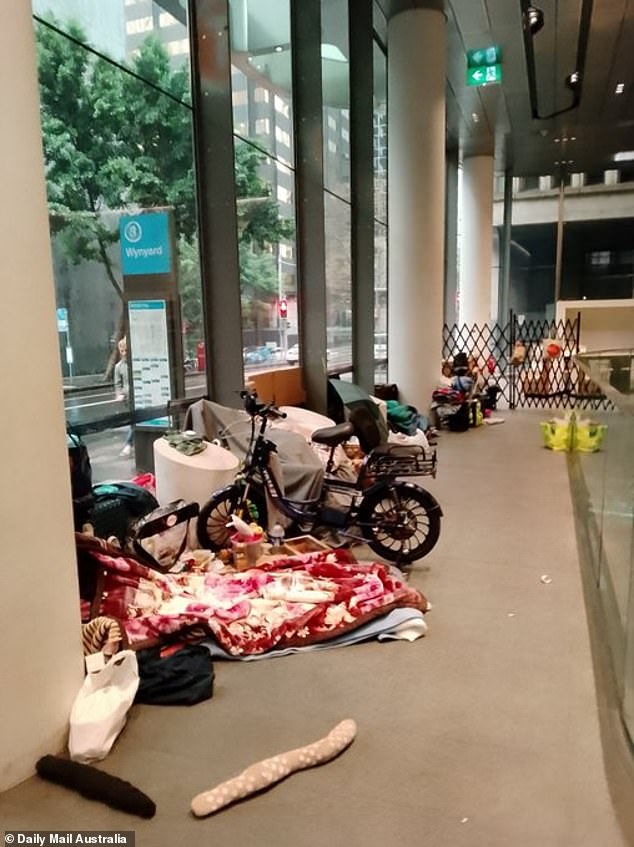
A wall at Sydney’s Wynyard station has become a sort of open-air locker where homeless people can store their belongings
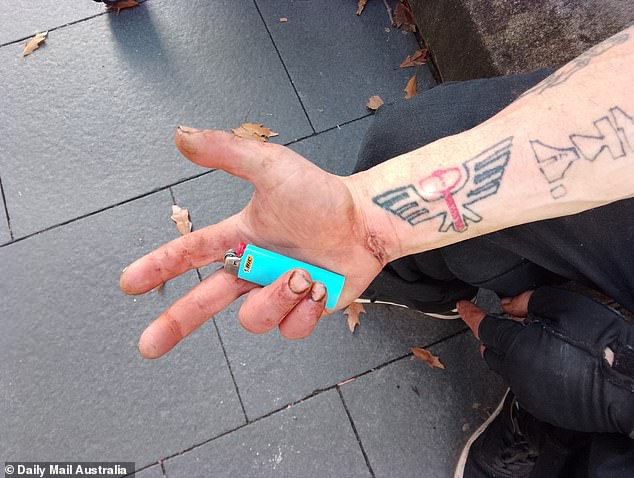
Robert claimed that an injury to his hand cost him his job and that he received no insurance benefits for it
Homelessness Minister Rose Jackson said the regional figures were unprecedented but not unexpected.
“We don’t just need data to know this. Our regional communities are experiencing this every day,” she said Friday.
“The sobering numbers paint a stark picture of homelessness and people sleeping rough in our state.”
Ms Jackson said the government was looking at all options to tackle the housing crisis, including a review of temporary accommodation rules.
Stricter restrictions have already been introduced in Byron Shire, which has imposed a 60-day annual limit on non-hosted short-term rentals.
